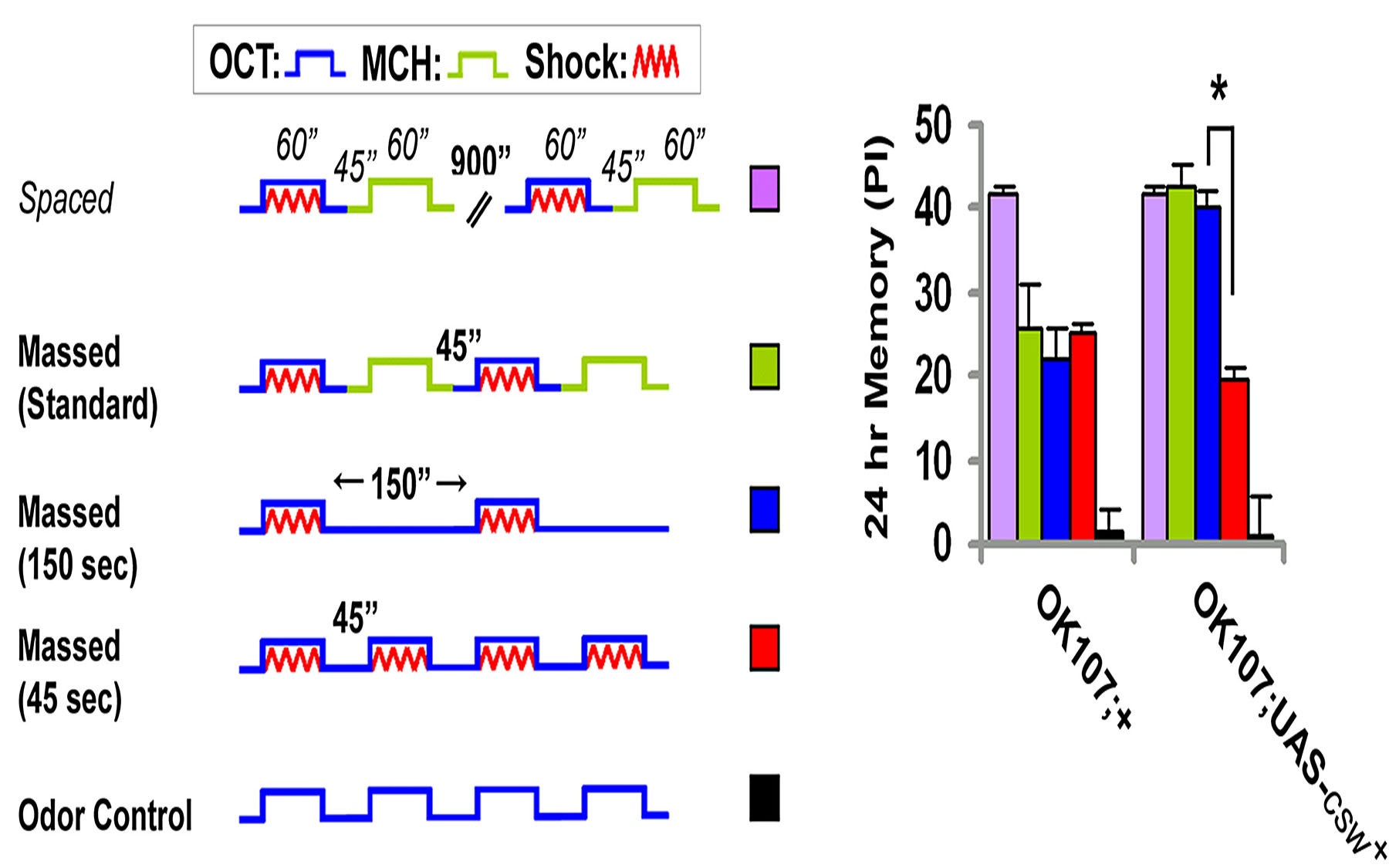Discovery could lead to treatments for learning and memory deficits, particularly Noonan’s syndrome
Cold Spring Harbor, NY — As most good students realize, repeated studying produces good memory. Those who study a lot realize, further, that what they learn tends to be preserved longer in memory if they space out learning sessions between rest intervals. Neuroscientists at Cold Spring Harbor Laboratory (CSHL) have now discovered how this so-called “spacing effect” is controlled in the brain at the level of individual molecules.

“Although there are many theories that explain the spacing effect at the psychological level and hundreds of studies that back them up, there has not been any understanding of this phenomenon at the neurobiological level,” says Zhong. “We have shown for the first time that the spacing effect has a genetic and molecular basis.”
Not only that, but Zhong’s team has also found that the duration of the resting intervals can be manipulated for achieving better memory by genetically altering SHP-2 phosphatase. “This ability to exploit the spacing effect’s molecular control to enhance memory could be useful in a wide range of settings such as education, advertising, and most importantly, in treating learning and memory disorders,” says Zhong.
How excess protein activity impedes long-term memory
Zhong has long been interested in genes that when mutated trigger learning and memory disorders such as Noonan’s syndrome, a genetically inherited disease with an incidence rate of 1 in 1000 to 1 in 2000 people. More than 50% of Noonan’s patients have mutations in a gene called PTP11, which encodes the SHP-2 phosphatase protein. In contrast to many disease-related mutations that shut off protein production or impair protein activity, these PTP11 mutations do the opposite—they boost the activity levels of SHP-2 phosphatase.
To understand how this change impedes long-term memory, Zhong’s team engineered these mutations into a gene in fruit flies called corkscrew that is the functional equivalent of PTP11 in humans.The mutant flies were taught to avoid certain odors via a training regimen of repeated learning sessions broken up by resting intervals lasting 15 minutes. But this training regimen, which induces long-term memory in normal flies, failed to work in the mutants because the increased activity of SHP-2 phosphatase disturbed the spacing effect.
Zhong’s team found that normally, as each learning period ends, SHP-2 phosphatase activity inside stimulated neurons triggers a wave of biochemical signals, which have to peak and decay before the next learning session can begin. “The repeated formation and decay of the biochemical signal during each rest interval induces long-term memory,” explains Zhong.
In normal flies, these signal waves took 15 minutes to peak and decay. In the mutants that had excess protein activity, however, the signaling wave took 40 minutes to decay, the team discovered. “A training regimen that includes only 15 minute rest intervals therefore fails in the mutants because increased SHP-2 phosphatase activity somehow causes the waves of signals to fall out of sync,” explains Zhong. “So it’s crucial that the period of rest should last as long as it takes for a signal wave to form and reset.”
In contrast to increased SHP-2 phosphatase activity, which lengthened the resting interval to 40 minutes, the team found that increased production of the protein with normal activity could shorten the duration of the resting interval to 2.5 minutes. “These findings suggest that SHP-2 phosphatase acts as a molecular timer that determines how long resting intervals should last,” says Zhong.
Reversing memory deficits
Zhong’s team has succeeded in reversing memory deficits in mutant flies in two ways. Either reducing the activity of mutated SHP-2 phosphatase to normal levels with drugs or simply altering training regimens to include 40-minute rest intervals instead of the normal 15 minutes both established long-term memory in the mutants.
“Our results suggest that longer resting intervals for Noonan’s patients might reverse their memory deficits,” says Zhong. His team is currently collaborating with clinicians to determine whether this intervention, which worked in flies, will also work in people afflicted with Noonan’s.
Written by: Peter Tarr, Senior Science Writer | publicaffairs@cshl.edu | 516-367-8455
Citation
“Spacing Effect: SHP-2 Phosphatase Regulates Resting Intervals Between Learning Trials in Long-Term Memory Induction” appears in the October 2nd issue of Cell. The full citation is: Mario R. Pagani, Kimihiko Oishi, Bruce D. Gelb and Yi Zhong. The paper is available online at http://www.cell.com/abstract/S0092-8674(09)01103-9 (doi:10.1016/j.cell.2009.08.033).
